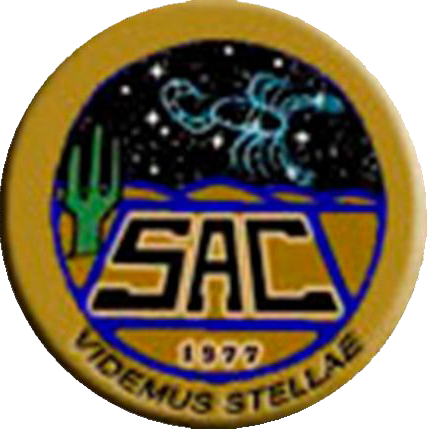Project Description
With many thanks to Pete Burggraaf, who drew up the plans and put up with us in his garage.
The SAC Tracker Project describes the process for building your own tracker.
Mechanical drawings are here.
Electrical drawings are here.
Here are some higher resolution versions of the images in the pdf documents.
Completed Trackers
A shot of my tracker set up at the Antennas site at the Hovatter Road “Antennas Site” about 100 miles from central Phoenix, west on I-10. Lots of room for plenty of people shooting the sky. The bad news, lots of airplanes tracking through the shots, but that is modern life for a wide field astrophotographer.
Bob Gardner and his red tracking mount on a beautiful gold tripod. Bob was the club president years ago.
Quad_Pod is Pete Burgraaf, the designer of the SAC Tracker, and his “QuadraPod” mount. Certainly an inventive way to get your tracker working.
Tracker1 thru Tracker7 are different views of Steve Coe’s tracker. It is mounted on an old Celestron tripod purchased at Riverside for 20 bucks. The green tape is on the switch for choosing North or South so I don’t reverse the motor by mistake. I usually add a counterweight, a jug of water will work. In one of the images you can see an old counterweight that I have also used successfully.
Gene Lucas says to let the weight just touch the ground for stability. I will try that. The batteries are taped onto one of the legs of the tripod. This design needs a 6 V Lantern battery and a 9V transistor battery.
Some tips:
1. Polaris is not directly on the pole, it is one degree from the North Celestial Pole (NCP) in the direction away from Kochab, the bright star at the end of the Little Dipper. Just set up the hinge axis so that it has Polaris at the edge of the view through the pipe.
Make certain that Polaris is offset in a direction away from Kochab. That is generally down in the winter and up in the summer.
2. Bring a towel or other knee pad. Kneeling on Arizona rocks for a while getting lined up on the Pole and lining up the image in the camera will get to your knee caps after a while.
3. Bring fresh batteries.
4. You are doing technical work in the dark. Be obvious: make certain the gears are turning the correct direction. Don’t start an exposure when the gear needs to be reset back to the beginning of the curved bolt. Make certain that the lens cap is off and the cable release is opening the shutter. Put film in the camera and make certain it is advancing. If you are using a digital camera, make certain there is room on the capture memory card for new images. Check the f/ratio of the lens.
I leave it to you to create new ways to make an “oops” while photographing the night sky, there are lots of ways to mess up. But, it always seems that enough of the shots do turn out that you are willing to try more. Be prepared and be persistent.
AstroPhotos Using the Tracker
Comet_HB is Comet Hale-Bopp with Arizona’s largest Saguaro cactus in the foreground. It is a 2 minute exposure on Fuji 800 print film. I fired the flash to light up the cactus during the exposure.
Comet Hyakutake with a 35mm lens and a 4 minute exposure on Fuji 800 ASA film. A meteor crossed the tail during the exposure.
Cyg_Deep is a 50mm shot of the constellation of Cygnus. It is a 10 minute exposure with Fuji 800 film on a great night far from city lights, near Sentinel, Arizona.
Cyg-trees is a shot of the constellation Cygnus the Swan just above the trees at the Five Mile Meadow site near Happy Jack, Arizona. It is a 3 minute exposure with Fuji 800 film.
A shot of the SAC star party at Five Mile Meadow. It is a 6 minute exposure with a 24mm lens. The red lights in the foreground are SAC members viewing the sky and looking at star charts with a red flashlight.
A shot of the crescent Moon in conjunction with Jupiter and Saturn. AJ fired the flash to light up the tree, me and the saguaro.
A shot of the thin crescent moon above the trees at Five Mile Meadow. It is a 2 second exposure with a 135mm lens at f/4.5.
A shot of the central area of the Milky Way with the 24mm lens and an 8 minute exposure. The head of Scorpius is on the right, Antares is center bottom, M 24 is on the left. The Pipe Nebula is the dark area center left.
A photo of the constellation of Scorpius above the treeline at Five Mile Meadow. It is a 5 minute exposure with a 50mm lens and Fuji 800 ASA film.
